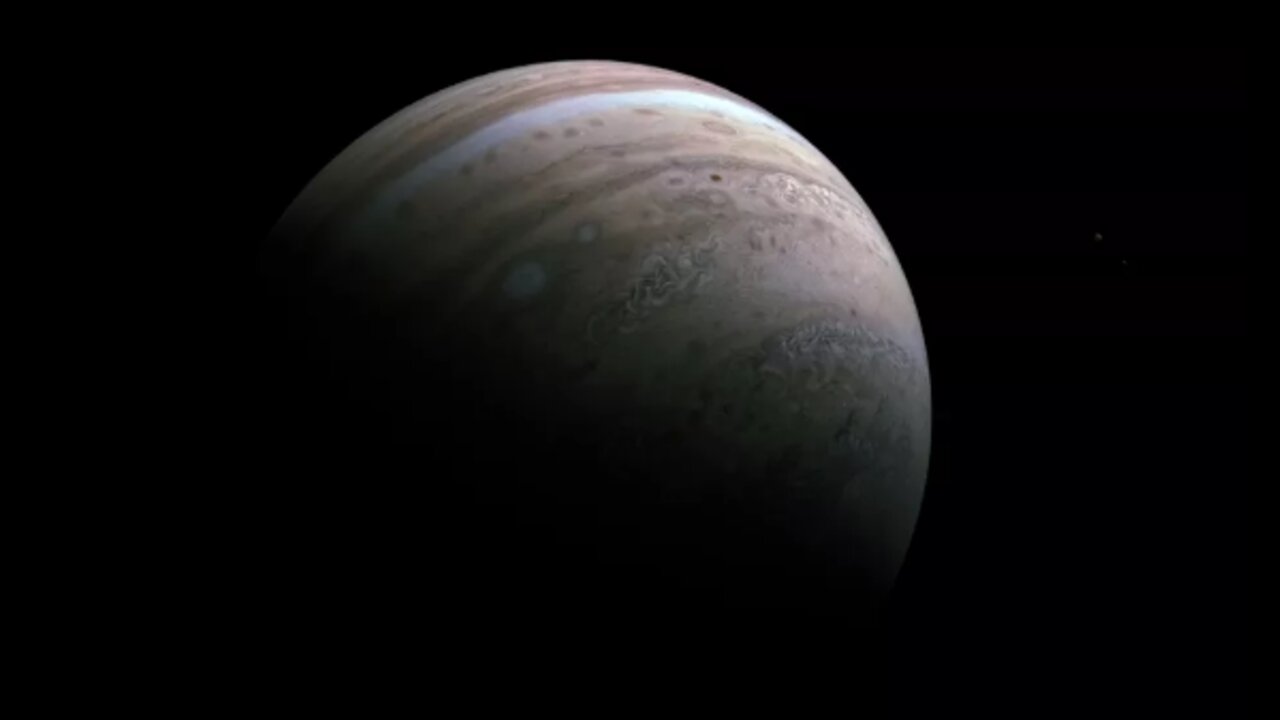Premium Only Content

Jupiter is coming its closest to Earth in nearly 60 years
upiter will make its closest approach to Earth since 1963 on Monday, coming about 367 million miles from our planet, according to NASA.
Why it matters: The event will coincide with the gas giant's "opposition," when it orbits to the opposite side of Earth from the Sun. It will appear larger and brighter than any other time of year.
With clear weather, Jupiter is expected one of the brightest objects in the sky for the next few nights.
What they're saying: People should be able to see three or four of Jupiter's Galilean moons with binoculars, Adam Kobelski, a research astrophysicist at NASA’s Marshall Space Flight Center in Huntsville, Alabama, said earlier this month.
With a 4 inch-or-larger telescope, viewers should also be able to see Jupiter’s Great Red Spot and bands.
“It’s important to remember that Galileo observed these moons with 17th century optics. One of the key needs will be a stable mount for whatever system you use," Kobelski added.
Jupiter reaches its opposition with Earth every 13 months, though it rarely reaches opposition during its closest approach, NASA said.
It's possible for Jupiter to approach Earth more closely than usual because the two planets do not orbit the Sun in perfect circles, meaning they "pass each other at different distances throughout the year," per NASA.
At its farthest point, Jupiter is around 600 million miles away from Earth.
The big picture: NASA's Juno spacecraft is set to fly within 222 miles (358 kilometers) of the surface of Jupiter’s icy, Europa, on Thursday, NASA said last week.
The moon is one of the best places to search for potential life in the solar system outside Earth, as its subsurface ocean could be habitable.
Juno is expected to obtained the highest-resolution images ever taken of portions of Europa’s ice crust while collecting data on the composition of its surface and interior.
Go deeper: NASA is about to crash a spacecraft into an asteroid
-
 1:09:40
1:09:40
Sean Unpaved
2 hours agoNFL 2025: Teddy's Trouble, Dak's Narrative Shift, Purdy's Prove-It Year, & Raiders' Rebuild
14.8K -
 2:20:23
2:20:23
Side Scrollers Podcast
4 hours agoElon Musk Creates GOONING AI, DSP Lawsuit?, Disney Adults Hit NEW LOW | Side Scrollers Live
7.14K -
 LIVE
LIVE
Viss
3 hours ago🔴LIVE - Learn How to Dominate The Duo Battleground! - PUBG
176 watching -
 1:09:40
1:09:40
Coin Stories with Natalie Brunell
4 hours agoEpstein Files EXPOSED: CIA Black Ops, Money Crimes & Bitcoin's Rise
15.3K -
 DVR
DVR
GloryJean
4 hours agoTR2ing til it's nerfed 🖱️ 6.7 K/D
7.55K -
 1:07:30
1:07:30
Timcast
3 hours agoDemocrat Impeachment Leader Schiff ACCUSED OF FRAUD, Trump DOJ Targets Anti-Trump CONSPIRACY
168K103 -
 2:09:35
2:09:35
Nikko Ortiz
3 hours agoLive - AI Has Gone Too Far
91.8K4 -
 8:06
8:06
Dr. Nick Zyrowski
1 day agoMost DANGEROUS TOXIC ITEMS Hiding in Your Home - These Make Your Sick
17.4K1 -
 2:15:41
2:15:41
The Charlie Kirk Show
2 hours agoAn Epstein Special Counsel? + The Minneapolis Mamdani | Parnell, Caputo, Benz | 7.15.25
48.2K19 -
 1:04:33
1:04:33
The Rubin Report
4 hours agoGavin Newsom Humiliated as Shawn Ryan Reads His Failures Back to His Face
88.1K84